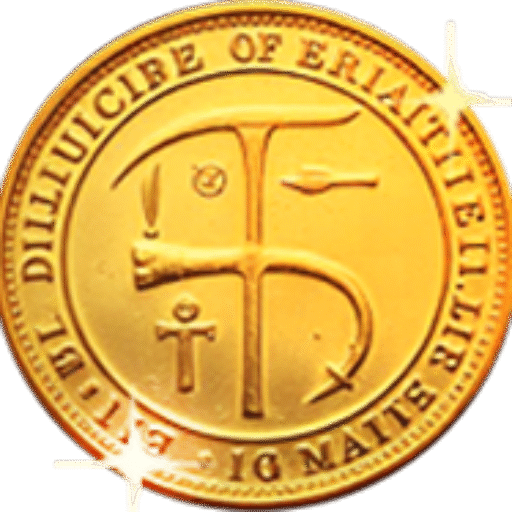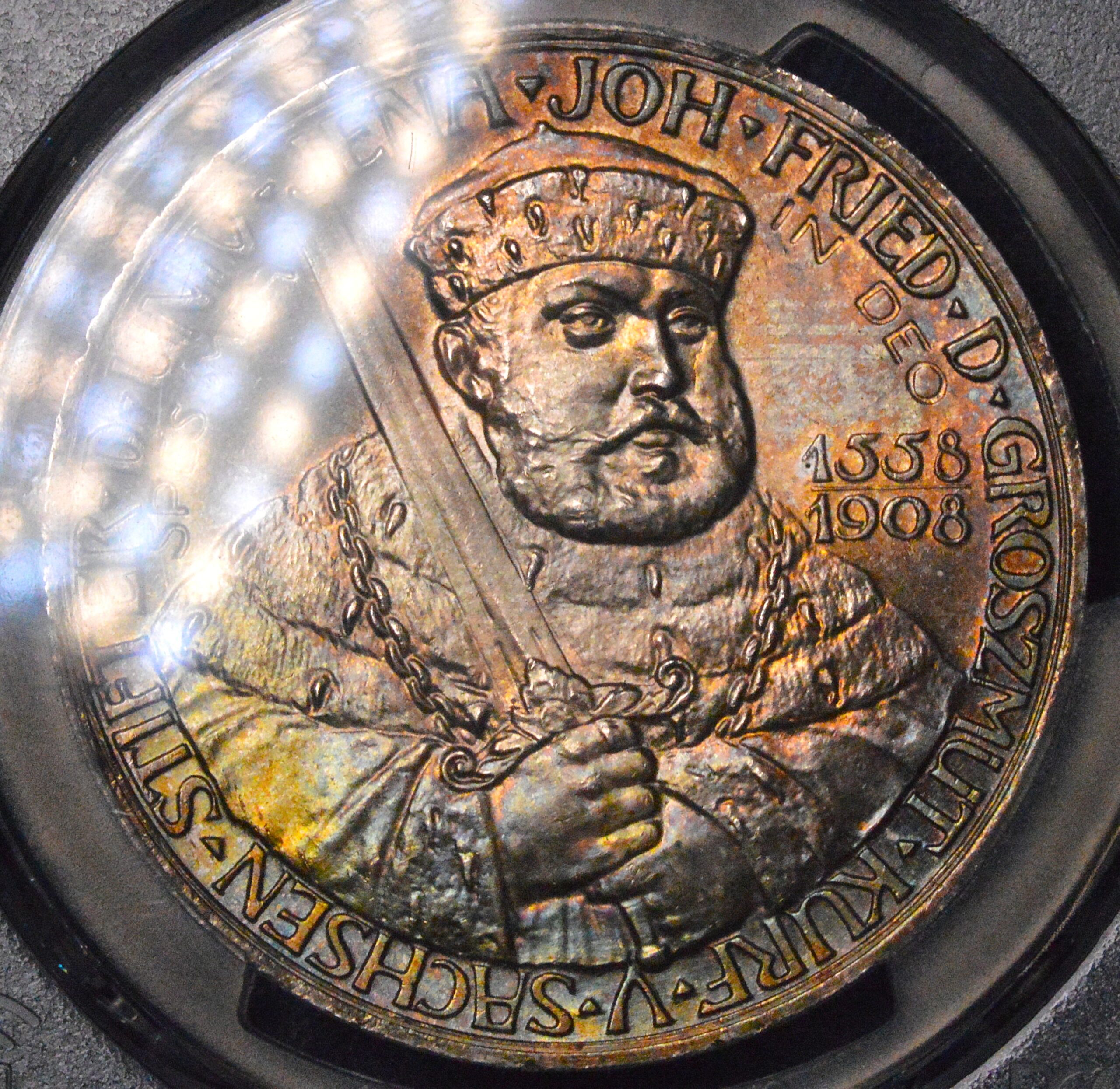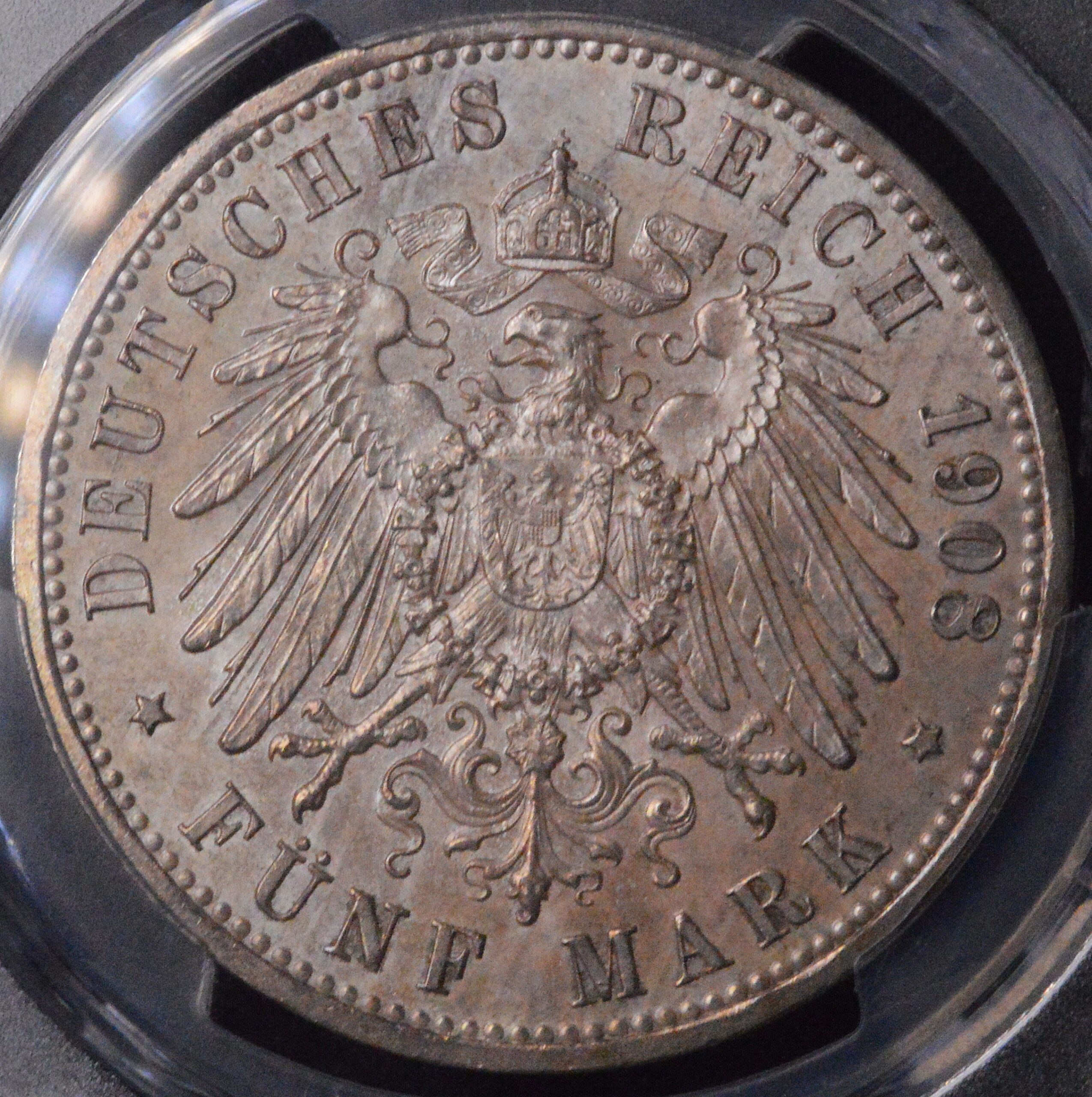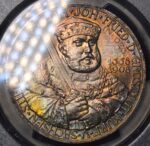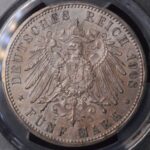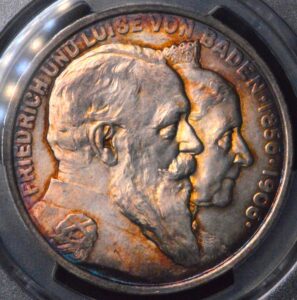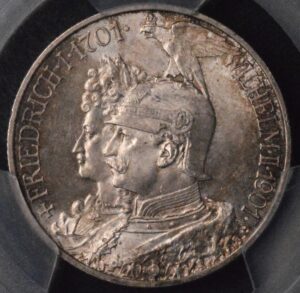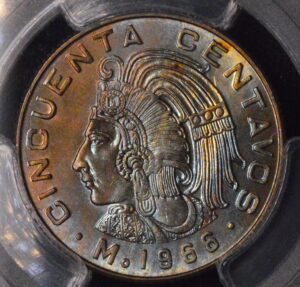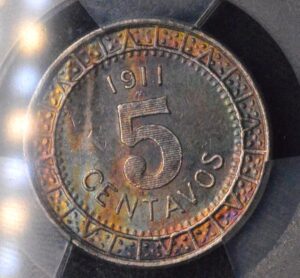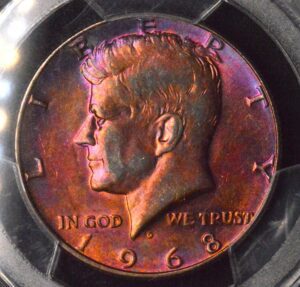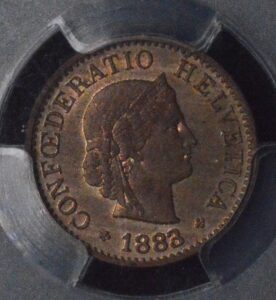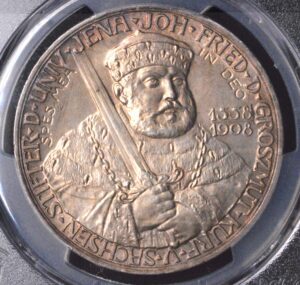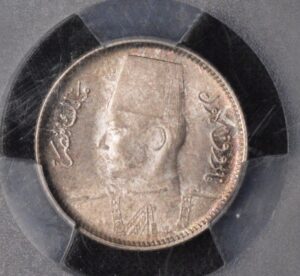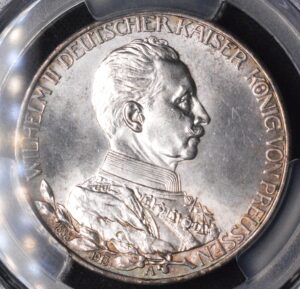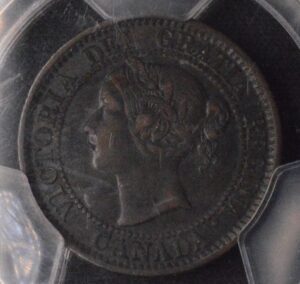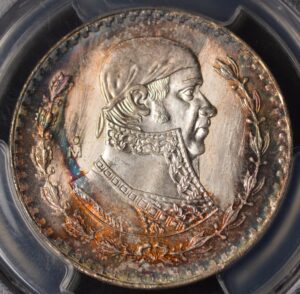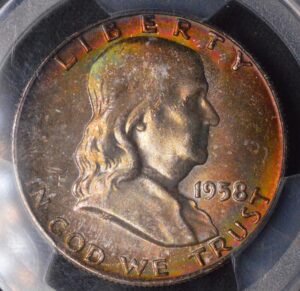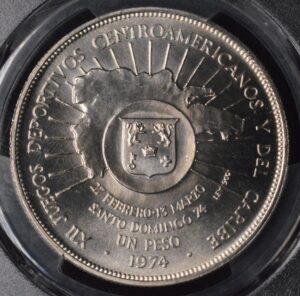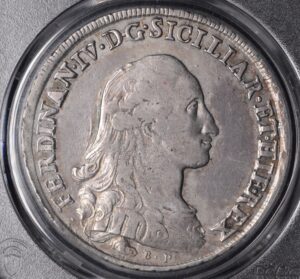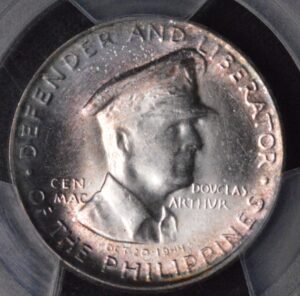Description
The 1908 Germany Saxe-Weimar-Eisenach 5 Mark “University of Jena” coin is one of the most celebrated and beautifully designed commemoratives from the German Empire period. Struck at the Berlin Mint, this coin was issued to honor the 350th anniversary of the University of Jena, one of Germany’s oldest and most distinguished universities. It was minted under Grand Duke Wilhelm Ernst and bears the mintmark “A” for Berlin.
The coin’s specifications are impressive: it is composed of .900 fine silver, weighs 27.78 grams, measures 38 mm in diameter, and contains 0.8037 troy ounces of pure silver. The obverse features a portrait of Johann Friedrich I the Magnanimous, founder of the university, while the reverse displays the German Imperial Eagle with a crowned shield on its breast. The edge inscription reads “GOTT MIT UNS” (God With Us), the traditional motto of the German Empire.
Mintage was limited to only 40,000 pieces, and high-grade survivors are scarce—especially in pristine condition. The piece you referenced, graded PCGS MS66, ranks among the highest-known examples, signifying nearly perfect luster, minimal marks, and exceptional eye appeal. The addition of rainbow or pastel toning—caused by long-term natural oxidation of the silver surface—makes such coins particularly prized, as each toned pattern is unique. Collectors place strong aesthetic premiums on these coins, especially when the color is even and vivid.
Typical untoned MS65–MS66 examples sell in the range of $250 to $600, but beautifully toned MS66 specimens have realized between $1,000 and $2,500 at auction. In rare cases, spectacular toning or proof-like strikes have reached sales exceeding $6,000–$10,000, particularly when certified by PCGS or NGC with strong eye appeal designations.
In short, the 1908 Saxe-Weimar 5 Mark Jena University coin in PCGS MS66 with rare rainbow pastel toning represents one of the finest examples of early 20th-century German silver commemoratives. Its combination of low mintage, artistic design, historical significance, high grade, and vivid coloration makes it a true trophy coin for Empire-era collectors.
The 1908 Germany Saxe-Weimar-Eisenach 5 Mark “University of Jena” coin is one of the most celebrated and beautifully designed commemoratives from the German Empire period. Struck at the Berlin Mint, this coin was issued to honor the 350th anniversary of the University of Jena, one of Germany’s oldest and most distinguished universities. It was minted under Grand Duke Wilhelm Ernst and bears the mintmark “A” for Berlin.
The coin’s specifications are impressive: it is composed of .900 fine silver, weighs 27.78 grams, measures 38 mm in diameter, and contains 0.8037 troy ounces of pure silver. The obverse features a portrait of Johann Friedrich I the Magnanimous, founder of the university, while the reverse displays the German Imperial Eagle with a crowned shield on its breast. The edge inscription reads “GOTT MIT UNS” (God With Us), the traditional motto of the German Empire.
Mintage was limited to only 40,000 pieces, and high-grade survivors are scarce—especially in pristine condition. The piece you referenced, graded PCGS MS66, ranks among the highest-known examples, signifying nearly perfect luster, minimal marks, and exceptional eye appeal. The addition of rainbow or pastel toning—caused by long-term natural oxidation of the silver surface—makes such coins particularly prized, as each toned pattern is unique. Collectors place strong aesthetic premiums on these coins, especially when the color is even and vivid.
Typical untoned MS65–MS66 examples sell in the range of $250 to $600, but beautifully toned MS66 specimens have realized between $1,000 and $2,500 at auction. In rare cases, spectacular toning or proof-like strikes have reached sales exceeding $6,000–$10,000, particularly when certified by PCGS or NGC with strong eye appeal designations.
In short, the 1908 Saxe-Weimar 5 Mark Jena University coin in PCGS MS66 with rare rainbow pastel toning represents one of the finest examples of early 20th-century German silver commemoratives. Its combination of low mintage, artistic design, historical significance, high grade, and vivid coloration makes it a true trophy coin for Empire-era collectors.
The 1908 Germany Saxe-Weimar-Eisenach 5 Mark “University of Jena” coin is one of the most celebrated and beautifully designed commemoratives from the German Empire period. Struck at the Berlin Mint, this coin was issued to honor the 350th anniversary of the University of Jena, one of Germany’s oldest and most distinguished universities. It was minted under Grand Duke Wilhelm Ernst and bears the mintmark “A” for Berlin.
The coin’s specifications are impressive: it is composed of .900 fine silver, weighs 27.78 grams, measures 38 mm in diameter, and contains 0.8037 troy ounces of pure silver. The obverse features a portrait of Johann Friedrich I the Magnanimous, founder of the university, while the reverse displays the German Imperial Eagle with a crowned shield on its breast. The edge inscription reads “GOTT MIT UNS” (God With Us), the traditional motto of the German Empire.
Mintage was limited to only 40,000 pieces, and high-grade survivors are scarce—especially in pristine condition. The piece you referenced, graded PCGS MS66, ranks among the highest-known examples, signifying nearly perfect luster, minimal marks, and exceptional eye appeal. The addition of rainbow or pastel toning—caused by long-term natural oxidation of the silver surface—makes such coins particularly prized, as each toned pattern is unique. Collectors place strong aesthetic premiums on these coins, especially when the color is even and vivid.
Typical untoned MS65–MS66 examples sell in the range of $250 to $600, but beautifully toned MS66 specimens have realized between $1,000 and $2,500 at auction. In rare cases, spectacular toning or proof-like strikes have reached sales exceeding $6,000–$10,000, particularly when certified by PCGS or NGC with strong eye appeal designations.
In short, the 1908 Saxe-Weimar 5 Mark Jena University coin in PCGS MS66 with rare rainbow pastel toning represents one of the finest examples of early 20th-century German silver commemoratives. Its combination of low mintage, artistic design, historical significance, high grade, and vivid coloration makes it a true trophy coin for Empire-era collectors.
CUSTOMER FEEDBACK








Related Products & Newly Released!
-
$450.00
-
$700.00




SHIPPING POLICY
Your order is shipped from the United States with USPS tracking within one business day.
14 Day Return Policy
You can return your item back within
14 days of the purchase

Secure payments
Your payments are 100% secure and are processed through Square or PayPal on a protected security network.
SHIPPING POLICY
FREE International and Domestic (United States) shipping. Your order is shipped with USPS tracking 24 hours after you order.
14 Day Return Policy
You can return your item back within
14 days of the purchase

Secure payments
Your payments are 100% secure and are processed through Square or PayPal on a protected security network.
RESOURCES
support
Get Fresh Articles!
Sign up now to receive our articles for the latest insights and promotions!
RESOURCES
support
Get Fresh Articles!
Signup our newsletter to get update insight or promotions.

